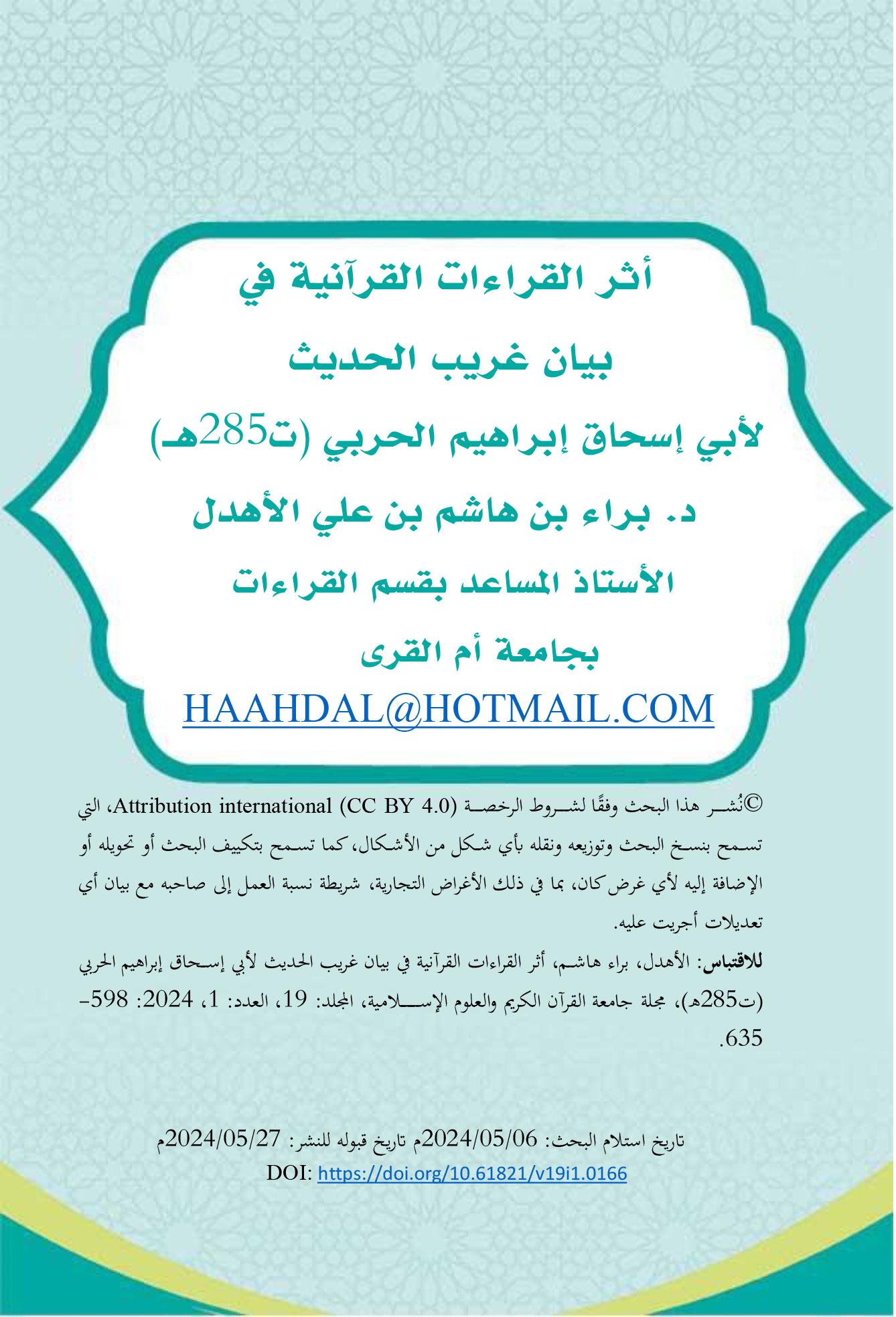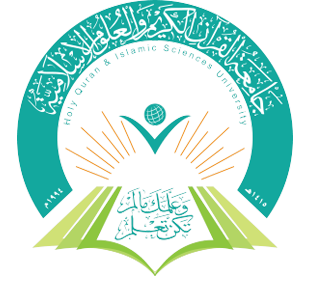The Impact of Quranic Recitations in Clarification the Strange Hadith for Abī Isḥāq Ibrahīm Al-Ḥarbī (D. 285AH)
DOI:
https://doi.org/10.61821/v19i1.0166Keywords:
Abū Isḥāq Al-Ḥarbī, Impact of Quranic Recitations, Guiding Readings, Strange hadithsAbstract
This research was concerned with explaining the impact of the Quranic Recitations in the book “Ghareeb al-Hadith” of one of the notables of the third century Hijri who is described as an Imamate in knowledge, namely Abū Isḥāq Ibrahīm Al-Ḥarbī, by tracking and collecting those readings, distinguishing the frequent ones from the irregular ones, and attributing each reading to its author. Then comment on the guidance of Abī Isḥāq for these readings in terms of what he directed from them in detail, or guide what he did not guide, comparing that with the sayings of scholars. One of the most prominent results that the researcher concluded was that the works on the science of Ghareeb al-Hadith are a manifestation of the established relationship between readings and Arabic, as it is established that the writing of Arabic dictionaries began with the writing of Ghareeb al-Qur’an and then Ghareeb al-Hadith. Among them, the readings contained in the Hadith book of Gharib by Abū Isḥāq Al-Ḥarbī amounted to twenty-seven topics, including the frequent ones and the abnormal ones. One of them is that the readings contained in the book were not on the same level in terms of the attribution to those who read them, Abu Ishaq Al-Harbi attributed some readings to those who read them, and neglected the attribution in some of them. One of them is that the guidance of readings was apparent in the words of scholars since early period in the history of authorship in the Islamic sciences, although they did not single it out as authorship until about the third hundredth century.
Downloads

Downloads
Published
Issue
Section
License
Copyright (c) 2024 Journal of the University of Holy Quran and Islamic Sciences

This work is licensed under a Creative Commons Attribution 4.0 International License.
©This article is an open access article distributed under the terms and conditions of the Creative Commons Attribution (CC BY) license



